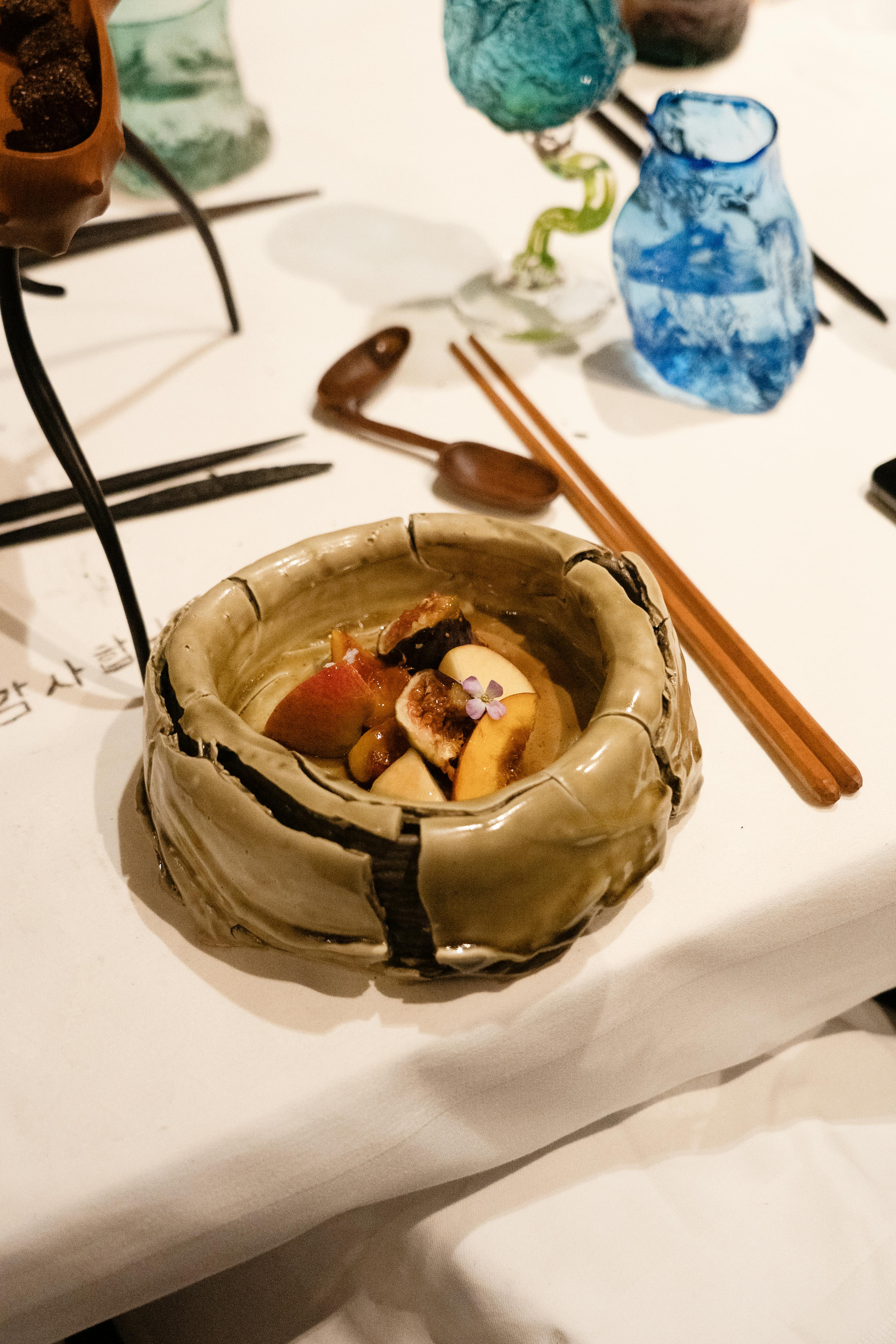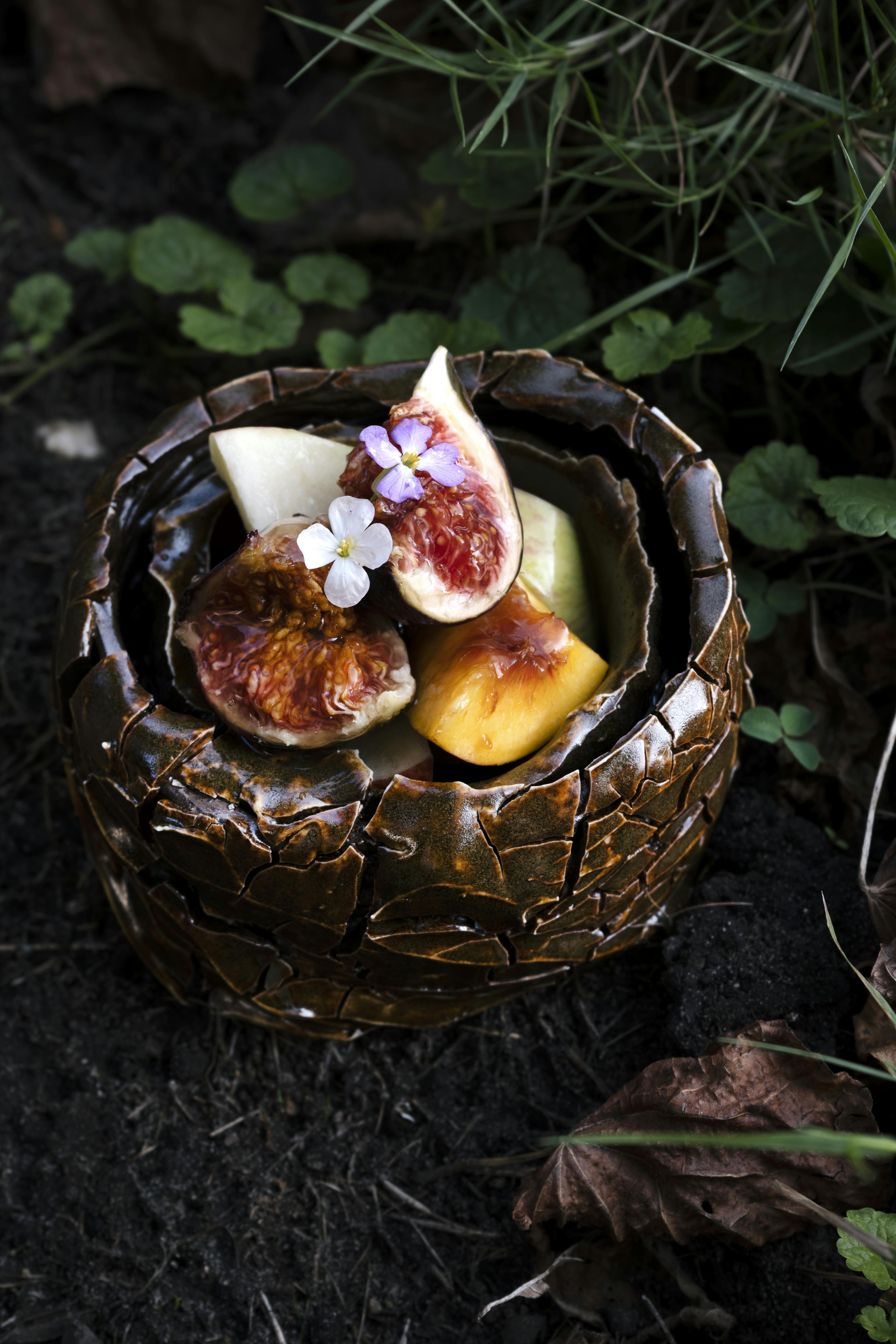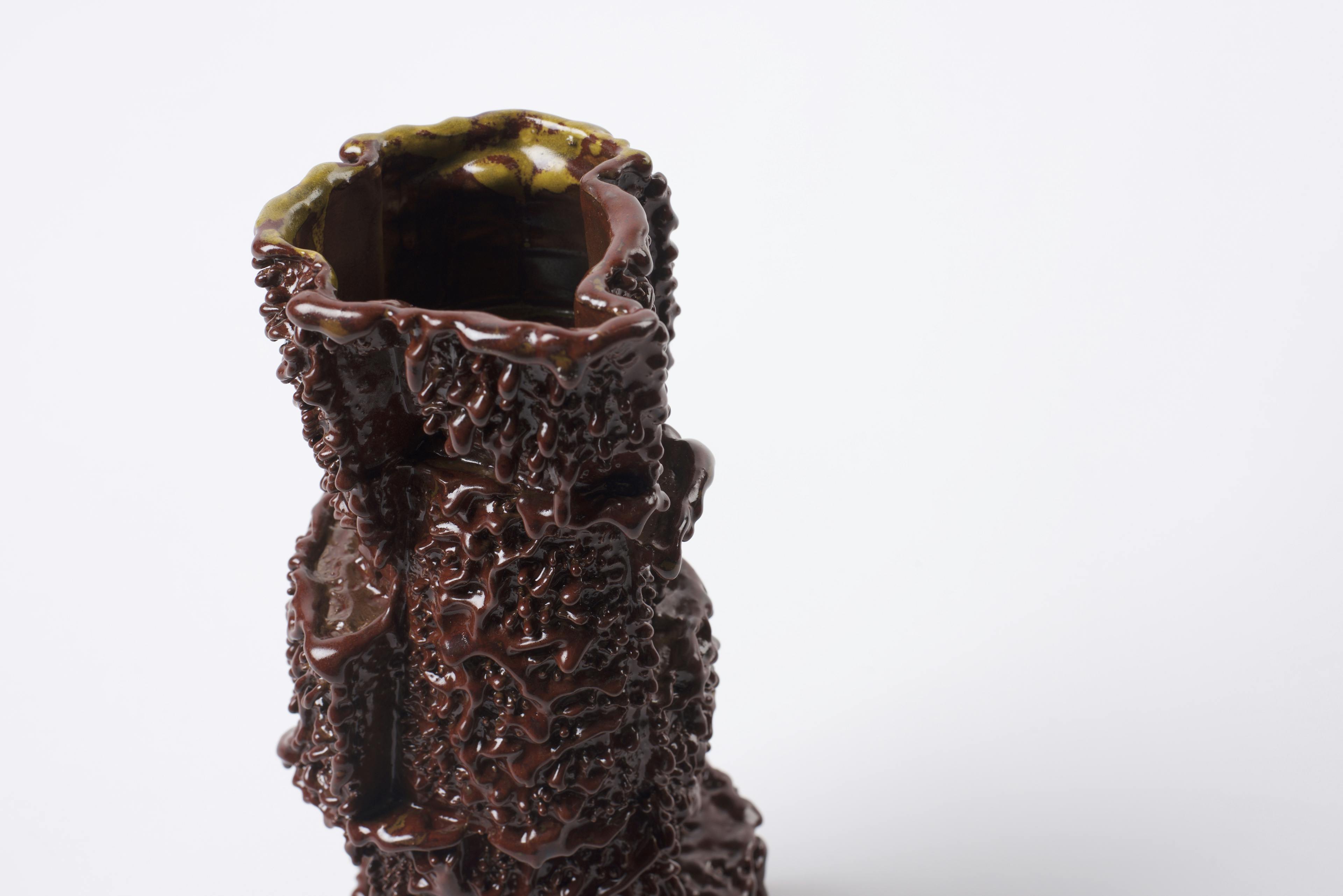
In Conversation with Steven Sales
Describe the place materials play in your work: its locality, place making or place extracting/distilling?
I've always been fascinated by the inherent properties of materials. As a child growing up on a working farm, I was shown that materials were versatile and adaptable – depending on the job they were required for. Today my practice is motivated by materiality and by revealing characteristics which are often unnoticed or overlooked.
Clay is an incredibly versatile material and I’m drawn to that. My work often showcases elements of this versatility by combining the pliable nature of plastic clay with slip made constituents. Working with wild clay is very fulfilling because deposits are so varied – there's a lot to find out about it.
Materials that need to be extracted from the ground, like clay and stone, are often regionally distinctive. For me these materials are imbued with a sense of place. A basic glaze can be created from clay, rock and ash (made from vegetation). All these ingredients can be gathered on a single walk. I think that's just amazing! Over the last few years I have amassed a small library of locally sourced glazes, each a physical record of a route, place and a moment in time.

How does working with these materials, rich with context and labour, impact the outcome of your practice?
Sustainability and developing ethical practices are the biggest factors shaping my work at the moment.
I’m obsessively precious with the materials I use. Their procurement, often from mining, has environmental and ethical impacts. In some instances I’ve stopped using certain materials altogether.
I like working with a limited number of materials. Not only is this more sustainable but I find it helps spark ideas. I find I’m more focused that way. I made a series of bowls for Steinbeisser in 2022 which consisted of four clay bodies and four glazes. Each glaze reacted with each body differently, so in the end I had 16 different finishes.
Handbuilding is great because I only need my hands and a few simple tools to create work. I could pick up my practice and take it anywhere (as long as there was a kiln), which feels incredibly freeing.


Is it essential to work with local materials rather than purchased ones? How so?
I typically work with materials which are at hand – so local in that sense, yes. This could be clay dug from the garden, glaze waste generated at Clay Shed, my ceramic studio, or items destined for landfill. I prioritise repurposing over purchasing.
Recently though, I bought a pre-made glossy transparent glaze in favour of creating my own from scratch. Using a tried and tested glaze meant I didn’t need to waste materials and firings through rigorous testing; which felt more sustainable.
I'm also interested in the concept of bioregionalism, the principle that systems are more sustainable if organised around geographic regions. For me this means using materials sourced in the UK and Ireland. I’ll always try to source materials locally, whether that's extracting my own materials or purchasing refined materials from a supplier.
What process do you follow when creating – does the material imply the outcome or does it exist alongside an idea?
Clay has been the primary material in my practice since 2011, so creating very much feels like a collaborative process these days.
New projects are initially ideas led. I do a lot of research and reading around the subject. Most of the time this takes me off into different directions, encourages new routes of enquiry and generates more ideas. Too many ideas really.
Working in clay embodies these ideas physically. Thereafter it becomes a selective process, ‘Did that work?’. Clay wheedles out the ideas which are worth pursuing. Unsuccessful attempts are either shelved for further development or abandoned entirely.


Is there a particular project/s that was/were pivotal in your practice? What has led to material focused work?
A pivotal moment in my ceramics practice emerged from a conversation I had with sculptor Rodney Harris about wild clay. That was almost a decade ago. Rodney was working on this printed map which delineated the strata of the UK. He used the minerals found in each part of the UK to create pigment for the map instead of traditional ink.
I took away the notion that I didn't have to rely solely on manufactured materials… and that clay was everywhere. I went searching for a source of wild clay close to my home in Bristol, which I found at Ashton Meadows, a small green space situated on the banks of the River Avon.
There are two that stand out : Gardenware Project 2019 and Ashton Meadows 2015–2018. Would you expand on the role material research played in these projects?
There are two that stand out : Gardenware Project 2019 and Ashton Meadows 2015–2018. Would you expand on the role material research played in these projects?
Ceramics is sometimes described as the confluence of art and science, a statement I agree with. When working with an unknown material, there are no instructions, no defined firing temperatures; only ‘what if’s’. That's exciting.
I always do a lot of tests. It's very methodical – that's the science part. The creative element comes from what one does with the material.
Materials are a great springboard for ideas. With intention, materials convey meaning, they tell stories. I've always worked with materials in this way, even before I started using clay.
As humans we are attracted to materials, but material research alone isn't very interesting, it has to have context. The work generated from Ashton Meadows was partly about wild clay, but also about the cultural and physical identity of the site.
As humans we are attracted to materials, but material research alone isn't very interesting, it has to have context.


What method do you follow when collecting materials/testing? Please share any practical tips, steps you take when testing clays/glazes?
Wild clay and waste materials are unknown and untested. Without meaning to sound like a buzz kill, it's important to be cautious at every stage; from collection, to processing and firing.
Here are a few essential steps to follow if you decide to explore untested materials.
Collect wild materials from undeveloped land, reducing the likelihood of contamination from potentially harmful materials like asbestos.
Take only what you need. You may need permission to remove materials from the landowner/local authority.
Reuse what you can. I carry out a calcination process on the grit and stones found in wild clay and add this back into the glaze recipe later.
Protect yourself. Wear a respirator and gloves when processing materials.
Protect the kiln. Use saggars – ceramic containers/dishes – to prevent accidental spills and flashing on the kiln shelves.
Preparing and testing materials is a time consuming and laborious process. It's important to find as much joy in the methodical elements of ceramics, as it is in the creative parts.